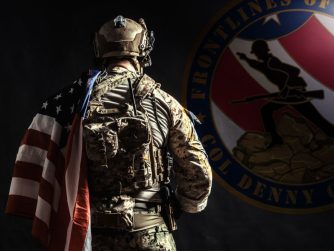On 14 May 1942, a bill establishing a women’s corps in the US Army was passed by congress; it became law the next day, creating the Women’s Auxiliary Army Corps (WAACs) and granting women official military status. In May 1941, Representative Edith Nourse Rogers of Massachusetts, the first congresswoman ever from New England, introduced legislation that would enable women to serve in the Army in noncombat positions. Rogers was well suited for such a task; she was active as a volunteer for the Red Cross, the Women’s Overseas League, and military hospitals. Because of her work inspecting field and base hospitals, President Warren Harding, in 1922, appointed her as his personal representative for inspections and visits to veterans’ hospitals throughout the country. She was eventually appointed to the Committee on Veterans’ Affairs, as chairwoman in the 80th and 83rd Congresses.
The bill to create a Women’s Auxiliary Army Corps would not be passed into law for a year after it was introduced (the bombing of Pearl Harbor was a great incentive). But finally, the WAACs gained official status and salary—but still not all the benefits accorded to men. Thousands of women enlisted in light of this new legislation, and in July 1942, the “auxiliary” was dropped from the name, and the Women’s Army Corps, or WACs, received full Army benefits in keeping with their male counterparts.
The WACs performed a wide variety of jobs, “releasing a man for combat,” as the Army, sensitive to public misgivings about women in the military, touted. But those jobs ranged from clerk to radio operator, electrician to air-traffic controller. Women served in virtually every theater of engagement, from North Africa to Asia.
It would take until 1978 before the Army would become sexually integrated, and women participating as merely an “auxiliary arm” in the military would be history. And it would not be until 1980 that 16,000 women who had joined the earlier WAACs would receive veterans’ benefits.
Now the issue is should women be able to be in all branches, including the combat arms and special operations forces. There are two questions: Can they do the job, and do we want them to do it. Both the Russians and Israelis tried it and did not continue.



